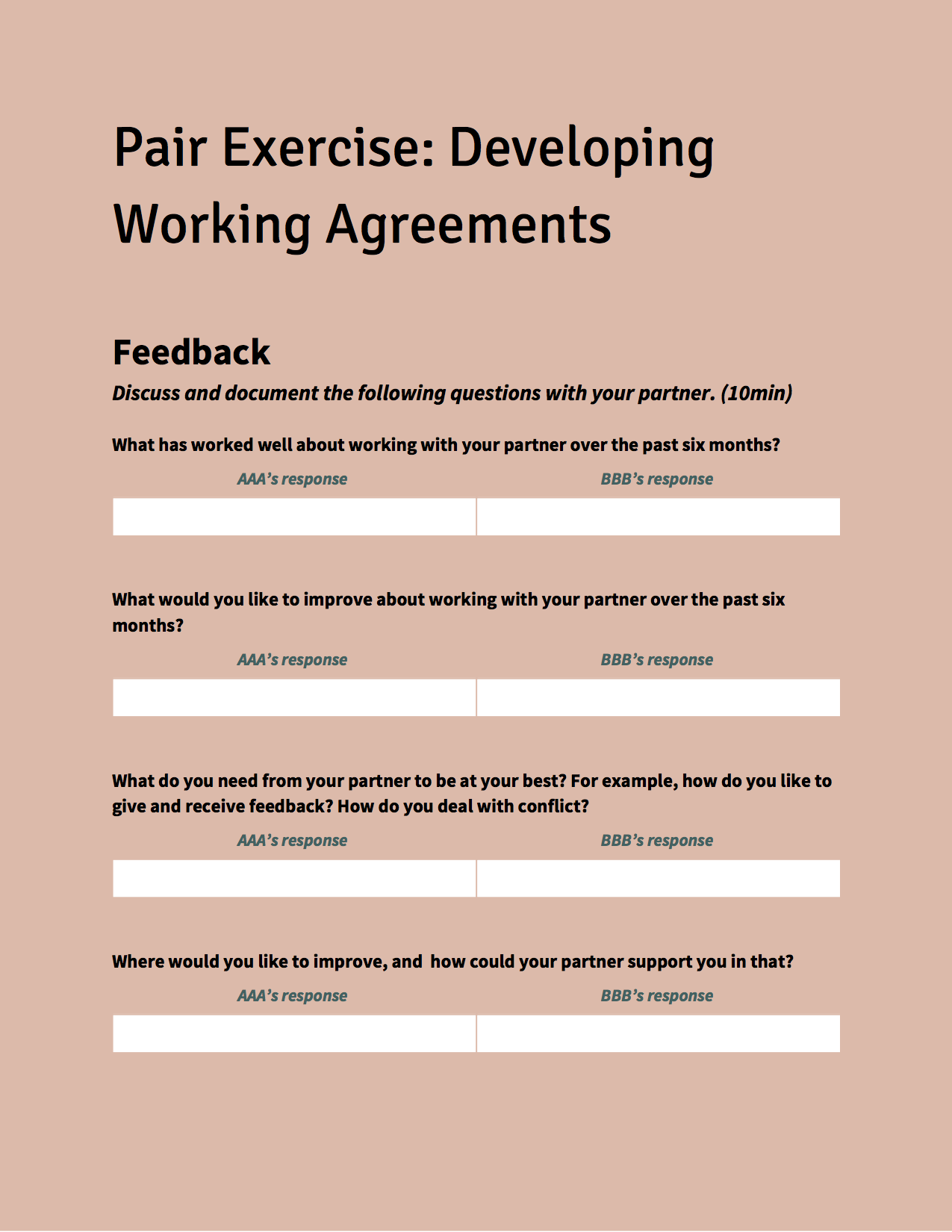 Group norms — how we communicate with each other, what we consider civil and appropriate, and so forth — are generally implicit. We only notice them when they’re not working — for example, when someone does something that feels unproductive or disrespectful to another. Unfortunately, what may seem like a breach of protocol to one might feel perfectly acceptable to another.
Group norms — how we communicate with each other, what we consider civil and appropriate, and so forth — are generally implicit. We only notice them when they’re not working — for example, when someone does something that feels unproductive or disrespectful to another. Unfortunately, what may seem like a breach of protocol to one might feel perfectly acceptable to another.
Many breakdowns in groups can be attributed to this lack of alignment around norms. This can be straightforward to address, but groups often fail to make the time to do so.
A simple and powerful solution is to come up with a shared set of explicit working agreements. This toolkit helps groups develop and refine working agreements on a regular basis by helping teams have productive conversations that matter.
Toolkit
This toolkit consists of a Google Docs template for one-on-one conversations. To use, you’ll need to make a copy for each pair by clicking on this link, then selecting File > Make a copy… in the menu.
Using the Working Agreements Template
The first and most important step is for groups to have regular conversations about how they want to work together. It starts with a series of 30-90 minute one-on-one conversations using this toolkit as a guide. These work best if pairs fill in their answers beforehand, so that the conversations themselves are focused and productive.
For a small group (five people or less), everybody should talk to everyone. In other words, for a group of five, each person will have four one-on-one conversations.
For larger groups, people should have between 2-4 conversations with the people they work with closest.
The length of these conversations depends on the healthiness of the group. If it has a healthy culture, 30-minutes should be enough. If there are problems, you may need 90-minutes. The first time groups use the toolkit, they should allocate at least an hour.
Once these conversations are complete, the whole group should discuss the results of these conversations, using its notes as a guide. and decide on the working agreements it wants to have.
There is no One Right Answer for what your “final” working agreements should look like. We recommend breaking them down into:
- Role descriptions (example)
- High-level Working Agreements (example). Between 3-10 high-level working agreements at most. Prioritize agreements that the group values most as well as the ones it needs to work on the most.
- Protocols (example)
Make sure these documents live somewhere where everybody will see them constantly.
The working agreements themselves should be considered a living document, meant to be revisited and refined on a regular basis. Repeat this process at least twice a year.
Related Blog Posts
- “The Art of the Start” (January 27, 2014)
- “Planning Isn’t Helpful If You Can’t Remember Your Agreements” (November 13, 2018)
Related Toolkits
Working Agreements is part of a larger DIY Strategy / Culture toolkit, which also includes:
- Mindset Cards. Get more concrete about desired culture. These can also be useful for generating good working agreements.
- Goals / Success Spectrum. Helps you get very clear and aligned about vision, strategic goals, and success metrics.
- Strategy / Culture Bicycle. Surface, align around, and prioritize critical questions about strategy and culture.
- Roadmap. Explore different scenarios and develop a strategic plan.
For more on the design philosophy of these tools, read, “Balance Bikes for Changemakers” (January 16, 2018).
About
Eugene Eric Kim created this toolkit with contributions from Anya Kandel.
Unless otherwise stated and to the extent possible under law, we dedicate this toolkit to the public domain.
History
September 8, 2017
- v1.0 released